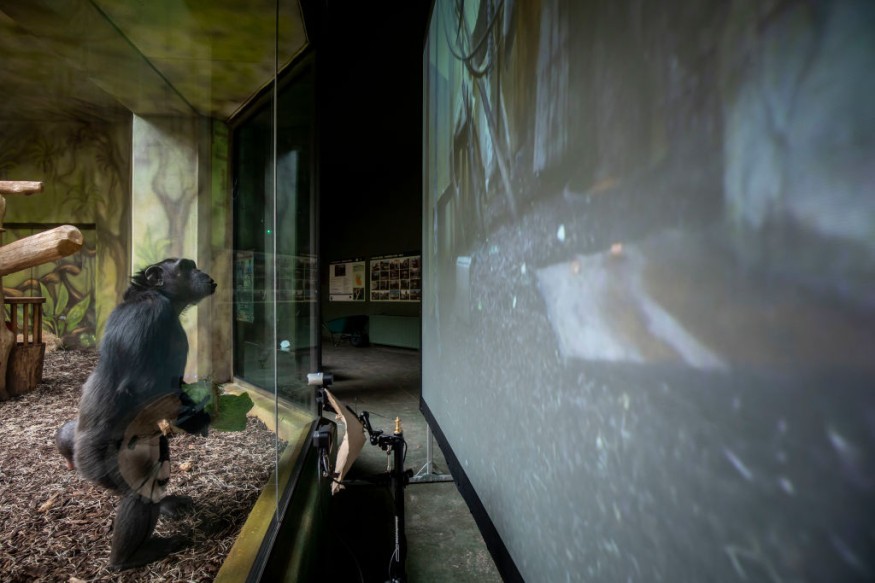University of Glasgow scholars are currently making a technology that would allow zoo animals to experience human-like entertainment. The study presented by the University of Glasgow constructs streaming methods to let primates watch movies or listen to music.
This technology is similar to how Spotify or Netflix works but targets animal audiences, particularly the primate species. Scientists dub the system a 'monkey media player' that caters to the entertainment needs of chimps, gorillas, and orangutans living in sanctuaries and specialized zoo facilities.
Monkey Media Player: Spotify and Netflix for Primates

The monkey media player uses a computer device programmed with interactive sounds and videos that the animal can control via touch.
According to the system's developers, the touchscreen approach could likely entertain and engage primates in ways they did not before while allowing their cognitions to exercise the way they do in the wild.
The streaming model the team, constructed is currently being used by three white-faced saki monkeys kept in Korkeasaari Zoo, located in Finland's capital Helsinki. The observation includes the exposure of the primates to technologies that are on par with what we utilize daily; among the data that the authors collected were the responses of the animals to the visual and audio stimuli given by applications such as Netflix and Spotify to a press release.
As part of the experiment, the monkey media player was placed inside the animals' enclosure. The monkeys should walk through infrared beam sensors to trigger the program to project videos or sounds. There are no limits to the streaming as long as the monkey stays in place and as long as they want to listen or watch.
The computer was exposed to the habitats of the primates for 32 days. Through the observation, the monkeys could listen to music, rain sounds, and traffic noises. The videos presented to them were underwater clips, the life of worms, and various abstract images full of shapes and colors.
Monkeys Might Prefer to Listen Than Watch
The device records how much time sakis spent in front of the streaming programs per session. Their average exposure scale was short and ran for just about a few seconds. As days passed, the interactions declined. One of the few differences collected from the experiment is that they likely select audio stimuli more than video stimuli, Technology Networks reports.
University of Glasgow School of Computing Science specialist and lead of the study Ilyena Hirskyj-Douglas explained that most of their findings in previous papers were collected through the help of the Korkeasaari Zoo, particularly of the white-faced sakis. This recent experiment contributes to the years of research about how computer systems designed for animals beneficially impact the creatures, the expert continued.
Experiments involving video and audio content were conducted in the past, but this is the first time that the monkeys were made free to choose from either of the two, Hirskyj-Douglas said.
The team believes that the data gathered from the series of their experiments would broaden our understanding of concepts between the streaming methods and the response of the animals, as well as build more technologies that are focused on improving the interaction of animals.
Future studies will investigate whether the short-scale interaction of the white-faced sakis was simply a normal behavior or linked to their collective level of interest. The research paper was presented at DIS '22: Designing Interactive Systems Conference, titled "Do Monkeys Want Audio or Visual Stimuli? Interactive Computers for Choice with White-Faced Sakis in Zoos."
RELATED ARTICLE : Seeing Ghosts and Demons? Science Says It Might be Because of Your Brain
Check out more news and information on Psychology in Science Times.
© 2026 ScienceTimes.com All rights reserved. Do not reproduce without permission. The window to the world of Science Times.










